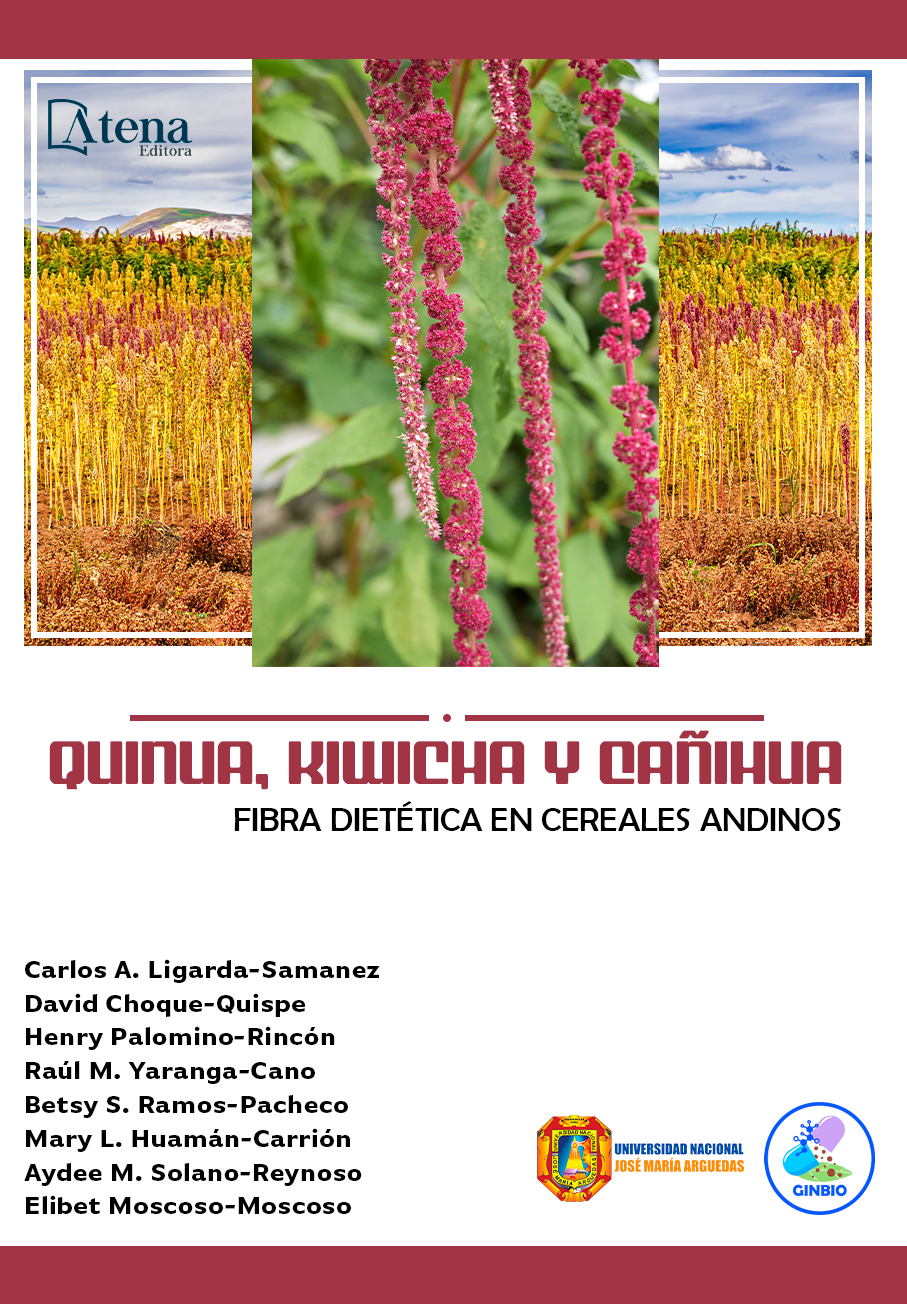
QUINUA, KIWICHA Y CAÑIHUA FIBRA DIETÉTICA EN CEREALES ANDINOS
Se evaluó el contenido de fibra dietaria y sus componentes en 3 variedades de quinua (Chenopodium quinoa Willd), 3 variedades de kiwicha (Amaranthus caudatus L.) y 3 variedades de cañihua (Chenopodium pallidicaule Aellen). Las siguientes variedades de cada grano andino fueron elegidas por su alto contenido de fibra dietaria soluble (FDS): quinua: variedad Salcedo INIA, cañihua: variedad Cupi y kiwicha: variedad Morocho. Estas variedades fueron molidas y tamizadas para obtener salvados ricos en fibra dietaria soluble e insoluble (FDI). Se probó dos métodos para aislar la fibra soluble e insoluble: método neutro y método alcalino. El método neutro consistió en solubilizar en agua las fracciones de FDS presentes en los salvados; posteriormente las fracciones solubles se purificaron por diversos procedimientos fisicoquímicos, luego de los cuales se realizó la operación de liofilización para la obtención de las fracciones ricas en FDS y FDI. Por otro lado, el método alcalino utilizó otro medio como disolvente para realizar el aislamiento de la FDS, como fue el reactivo de hidróxido de sodio al dos por ciento; los residuos de las fracciones de FDS y FDI fueron liofilizados. Una vez aisladas las fracciones ricas en FDI y FDS por los métodos neutro y alcalino, a partir de los salvados concentrados, se evaluaron sus propiedades fisicoquímicas y tecnofuncionales; además, se determinó el rendimiento de ambos métodos de extracción de fibra. Finalmente, con los resultados que se obtuvo en esta investigación, se demostró que el método más adecuado para la extracción de las fracciones de FDI y FDS fue el que utiliza el - procedimiento neutro.
QUINUA, KIWICHA Y CAÑIHUA FIBRA DIETÉTICA EN CEREALES ANDINOS
-
DOI: 10.22533/at.ed.071212403
-
Palavras-chave: Fibra dietética, cereales andinos, quinua, kiwicha, cañihua
-
Keywords: Dietary fiber, andean cereals, quinoa, kiwicha, cañihua
-
Abstract:
The dietary fiber content and its components were evaluated in 3 varieties of quinoa (Chenopodium quinoa Willd), 3 varieties of kiwicha (Amaranthus caudatus L.), and 3 varieties of cañihua (Chenopodium pallidicaule Aellen). The following varieties of each Andean grain were chosen for their high soluble dietary fiber (SDF) content: quinoa: Salcedo INIA variety, cañihua: Cupi variety, and kiwicha: Morocho variety. These varieties were ground and sieved to obtain bran rich in soluble and insoluble dietary fiber (SDF). Two methods were tested to isolate soluble and insoluble fiber: the neutral method and the alkaline method. The neutral method consisted of solubilizing the SDS fractions present in the bran in water; the soluble fractions were then purified by various physicochemical procedures, after which the freeze-drying operation was performed to obtain the fractions rich in SDS and IDF. On the other hand, the alkaline method used another medium as a solvent to perform the SDS isolation, such as the two percent sodium hydroxide reagent; the residues of the SDS and FDI fractions were lyophilized. Once the fractions rich in SDS and SDF were isolated by the neutral and alkaline methods from the concentrated bran, their physicochemical and techno-functional properties were evaluated; in addition, the yield of both fiber extraction methods was determined. Finally, with the results obtained in this research, it was demonstrated that the most adequate method for the extraction of FDI and SDS fractions was the one using the neutral procedure.
-
Número de páginas: 113
- Carlos A. Ligarda-Samanez
- David Choque-Quispe
- Henry Palomino-Rincón
- Raúl Marino Yaranga-Cano
- Betsy Suri Ramos-Pacheco
- Mary Luz Huamán-Carrión
- Aydee Marilú Solano-Reynoso
- Elibet Moscoso-Moscoso


